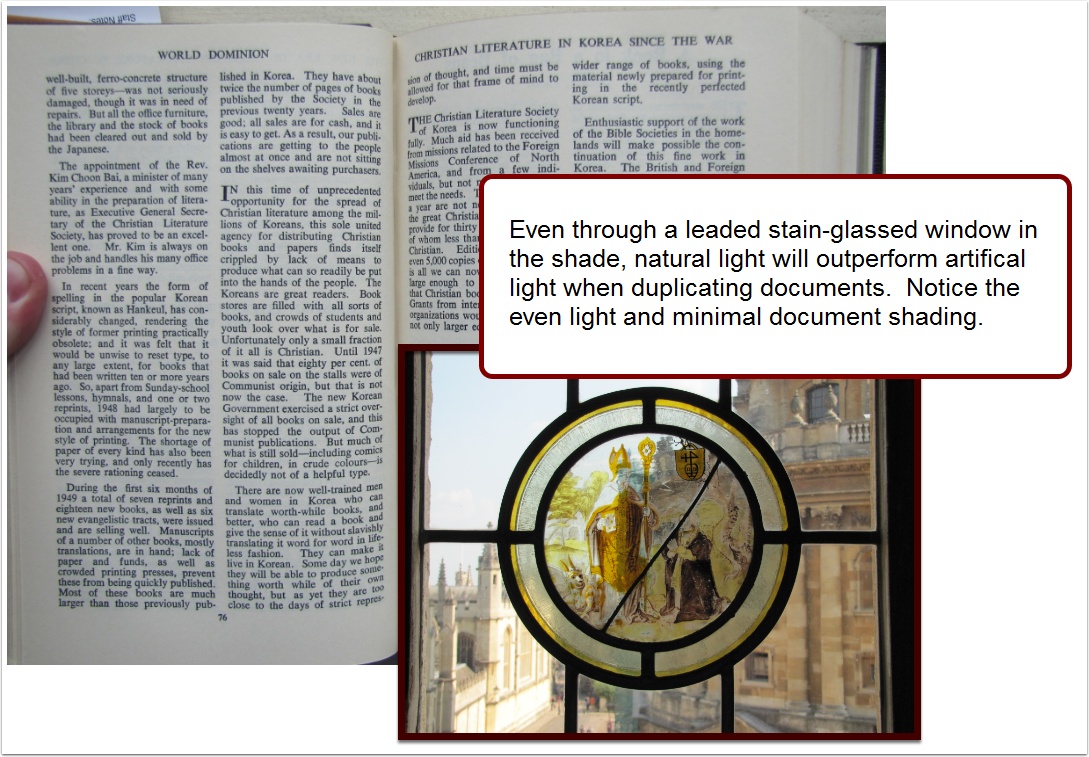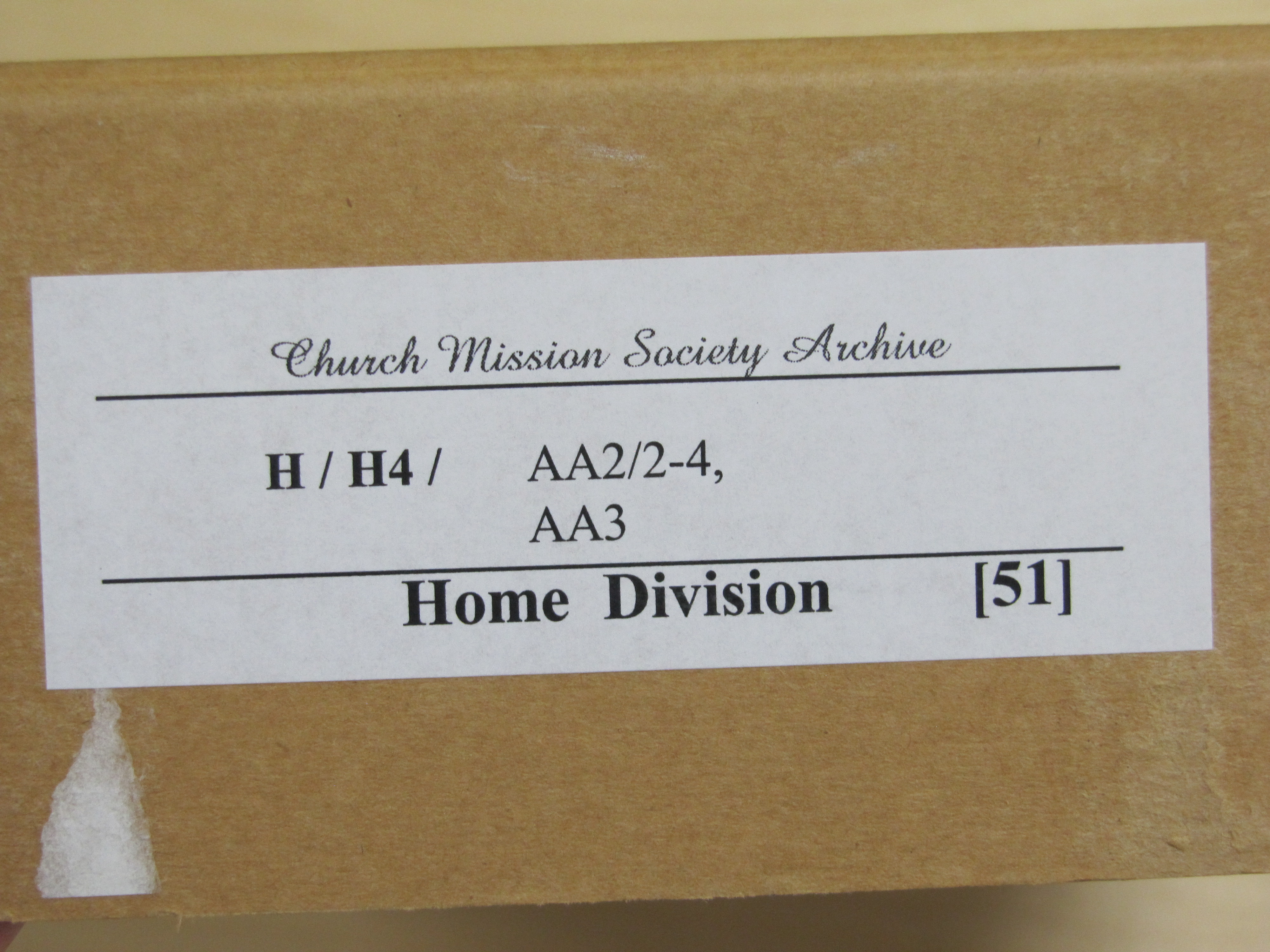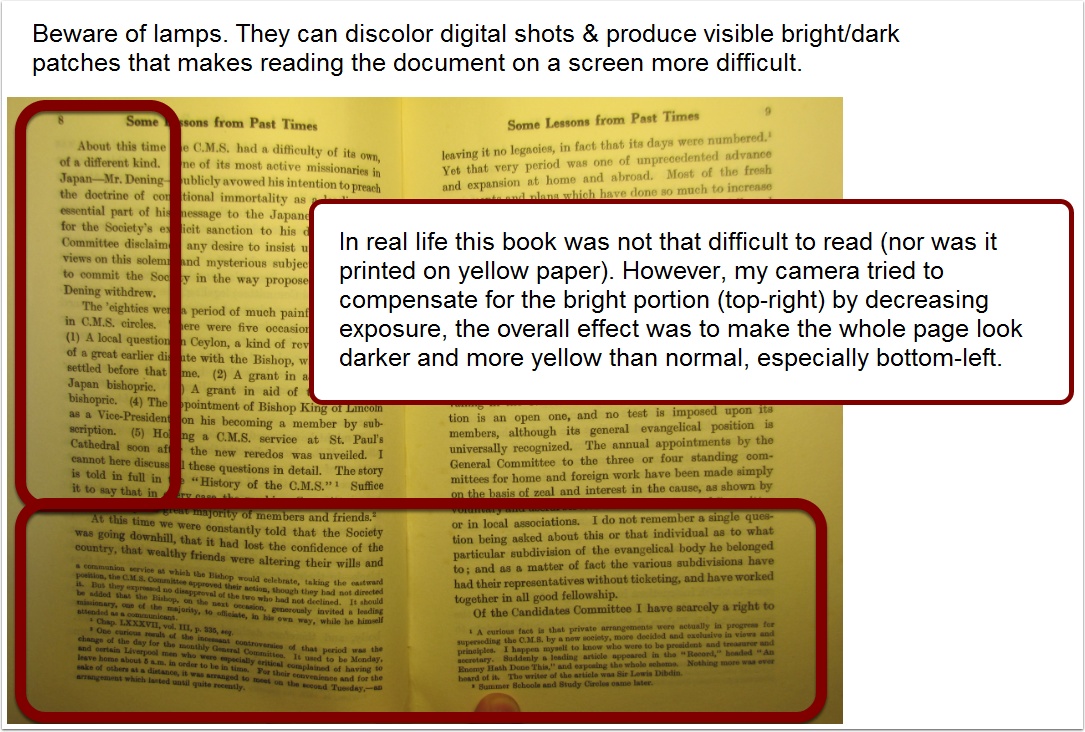Main Body
Conducting Research with a Digital Toolchest
Digital technology offers researchers opportunities to compress the amount of time needed in the archive. In an age of tight budgets and scarce research funds this is particularly important. All you need do is duplicate the material you want and you can look it over at your leisure back home. However, there are a few considerations you will want to be aware of before you start the digitalizing process.
Find Good Lighting
When you arrive at the archive, and have received your first set of materials, look for an area with a good level of light in which to work. Most contemporary cameras will work well for duplication purposes in research libraries provided you have the needed light. However, not all light is equal. Natural light works best for digitalization and is far superior to either florescent lights in the ceilings or desk lamps on the table. You will therefore want a spot that is close to a window that captures the afternoon sun. If you’re working in the northern-hemisphere, you’ll want a south- or west-facing window. If there are no windows available, look for the locations with the brightest and most evenly distributed light.

If you can’t find a window, try to find a location where you can digitalize documents with a minimum of shadows present on the page. Therefore, even lighting is crucial. If only one-half of a page is well lighted, your camera will adjust to compensate for the area that is lighter, and thereby increase the shadows present on the page’s darker half. This will make the page difficult to read.
Also, if you are not able to work near a window, conduct your digitalization near the middle of the room. Even in well-lit corners, the majority of light hitting your document will come from one direction. This increases the chances of dark spots marring your scans.

Establish an Efficient Work-Flow
As you are digitalizing files, find a work-flow that maximizes productivity.
Be smart about what you digitalize, scan through your documents before you digitalize them. There will be many, many documents that will be entirely irrelevant to your research – ignore them. Read through the archive’s collection guide for clues as to what will be essential to digitalize and what will not be as important. Also, try and avoid taking too long framing each shot perfectly. Your pictures do not need to be framed professionally, it just needs to be readable.
Concentrate on these four points when digitalizing documents.
- Your camera must be parallel to the image plane.
- The shot must be relatively straight so that you can read it easily on a screen.
- The shot must be evenly lit
- The shot must be well-focused.
Photograph Archive boxes and folders
Always photograph the box and folder from which you digitalize files. This will make it much easier to organize your documents at a later time.



